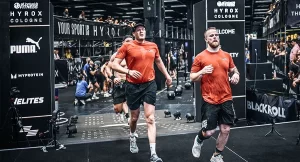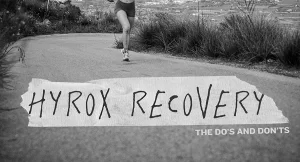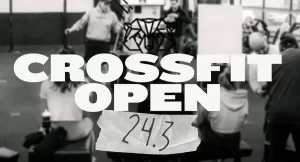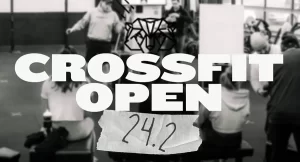The WALL BALL tutorial

Raise your hand if you get excited when you read that the workout contains wall balls.
Hand still down?
Chances are you’re in the shorter height range of CrossFit athlete.
However your height shouldn’t dictate how efficient you are at the movement, and even taller athletes can benefit immensely from improving their technique on the seemingly simple movement.
So are you ready to step up your wall ball game? This article breaks down the major components of the movement in order to deliver you the essential information you need to correct errors in your execution and improve your form.
Alternatively you can watch our youtube tutorial.
We will go over:
Overview
Positioning
The squat
The press
Coordination
Timing for maximum efficiency
Introduction to Wall Ball
Although the medicine ball has been around for a long time the wall ball has been largely popularized by CrossFit in the early 2010s when Mainsite started frequently programming the exercise.
The most renowned wall ball workout has to be Karen a straightforward WOD of 150 wall balls for time.
It’s important to note that the exercise is deceptively simple.
Technique and timing changes that can appear as easy fixes actually require more coordination and sometimes more effort to nail down.
But once you master the movement it will be much easier to swap in and out small changes in order to adapt the movement to the context of the workout it’s programmed in.
Let’s jump right into what these corrections can be and how can you apply them ASAP.
Best positioning
As you walk into a CrossFit box one detail that will quickly jump to your eye is the targets that have been either drawn to the wall or fixed onto the pull-up rigs.

These targets are utilized as a point of reference for the height the medicine balls must reach in order to perform a correct “good-rep” wal ball.
What's the height of a wall ball target?
The standard height of a wall ball target is set at 10 feet for males and 9 feet for females.
If the height of the wall ball target is fixed the same can’t be said for the distance the athlete chooses to stand from said target.
This factor is often an underrated detail to how one performs the exercise.
- Stand too close and you won’t be able to properly see the target and will make it harder on yourself to hit correctly.
- Stand too far away and your arms will be taxed much sooner as you will have to throw the ball forward with much more force.
Additionally how close to yourself you hold the ball will also play a part in how easy you can make the movement for yourself.
The further away you hold the ball and the longer the lever between your center of gravity/body and the medicine ball will be. The longer the lever = the more taxing the movement will be. Just be careful to not keep it attached to yourself to the point where things get uncomfortable.
Ok so not too far and not too close… could you be a little more clear?
Of course each athlete will have to experiment a little to find the positioning that works best for them but as a point of reference we like to suggest our athletes to place themselves somewhere between the 0.5 to 1m mark distance from the target while keeping the ball as close as you can to your body without it feeling too awkward.
The squat
The squat is the first of the two components that make up the wall ball.
It’s the powerhouse of the movement and what truly allows you to propel the ball up and over the heigh target.
The major things you will have to pay attention to in the squat are your positioning in the bottom of the movement and how quick you are to come out of said bottom position.
In the bottom of the squat your elbow should comfortably sit in the front rack position without touching your knees.

If you have a hard time getting in this set up some front rack mobility work as well as knee and ankle mobility could help you out.
It’s important to not allow the ball to bring you downwards making you collapse, as it will require even more energy to get out of that position.
When you come out of the bottom position you want to be explosive in order to transfer as much power to the medicine ball and spare your arms from having to do all the hard work of pressing the ball upwards.
After all, your legs can handle much more work than your upper body.
The press
The press should come naturally once you are able to easily explode out of the squat.
Make sure as you come upwards that you keep eye contact with the target and take advantage of the whole extent of the movement to propel the ball upwards.
With this we mean don’t cut yourself short, instead come up onto your toes as you complete the press.
If you’re a tall athlete you may not need to do so but for the more vertically challenged, taking advantage of anything and everything that will help give an extra push to the ball can be crucial.
Coordination
In the sage words of Mike Tyson
“Everyone has a plan until they get punched in the face”
He may have not been referring to being hit in the face by a medicine ball but the quote still stands true:
you can have the best squat capacity, a really strong press and great aerobic capacity but if you can’t catch and throw that ball correctly you’ll eventually end up having it knock you out.
Coordination is simply acquired through repetition and practice.
However, if you find you have a particularly hard time with this exercise it may benefit you to include it a little more frequently into your training sessions until you become more comfortable with it.
If you do end up taking one to the face try to shake it off quickly but be quick to return to the movement.
Usually athletes will have to put up with some discomfort the first few repetitions but will manage to get back into a good rhythm a few reps in.

Timing
The major factor that plays into the timing of this skill is the timing in the catch.
We have different recommendations depending on the athlete.
If you are a beginner and still working on smoothing out the movement we recommend receiving the medicine ball and then riding it down.
If you are more advanced you should start practicing with different receiving techniques and working on the timing of your catch.
Ideally you shouldn't put your hands on the ball until you are close to being in the bottom position of the squat.
This way the movement becomes faster as the ball will accelerate its descent if you are not there to stop it until the very last moment.
Catching it so late can be slightly more taxing but can also result in 0.5 to 1 second less on each rep.
Such a difference in a high volume workout like Karen can result in an entire minute or more being cut off from your total time.






